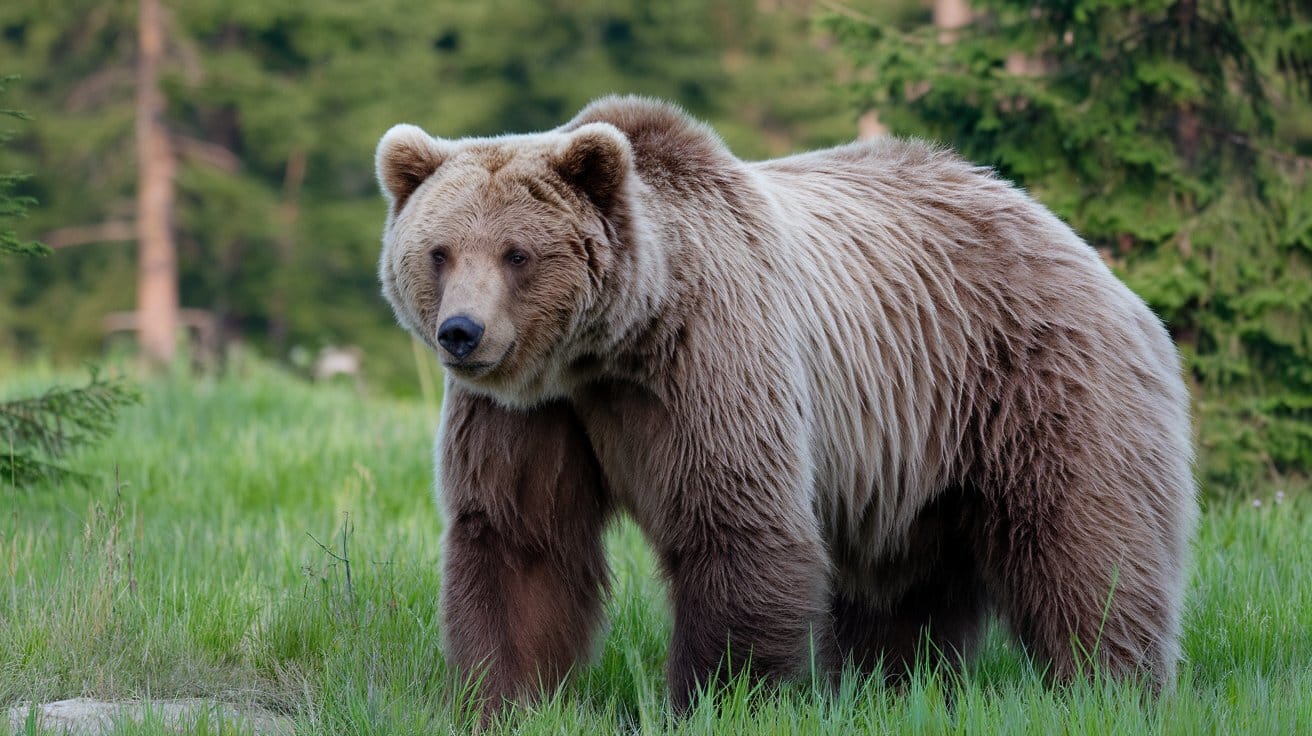Grizzly 399 was more than just a bear. She was a living symbol, not only of the wilds of Wyoming but of something deeper: the fragile, delicate connection between humans and nature.
On this page
For nearly three decades, this remarkable grizzly roamed the Grand Teton National Park, captivating hearts and challenging our perceptions of wildlife. Her life, full of triumphs and tragedies, became an allegory of survival and coexistence, one that will be remembered for generations.
When news of her death from a tragic car accident broke, it felt like the end of an era. The Queen of the Grand Tetons, as she was affectionately called, was gone.
But the legacy Grizzly 399 leaves behind is not just about her physical presence. It is about what she represented — a bridge between the wilderness and our own human emotions.
A Global Icon of Wildlife
Born in 1996, Grizzly 399 wasn’t just another bear tagged for tracking. From the moment she stepped into the public eye, she became an ambassador of the wild, showing that animals—creatures we often fear—have a much more complex emotional and social world than we ever thought possible.
She wasn’t just a beast of the forest; she was a mother, a survivor, a symbol of resilience.She raised 18 cubs over her lifetime, many of them surviving because of her protective and cunning instincts. Unlike most grizzlies, she chose to live near the roads, where people could see her, photograph her, and admire her from a distance.
And in those moments—watching her cuddle her cubs or forage for food—Grizzly 399 revealed a gentler side of a creature many of us are conditioned to fear. She humanized the grizzly bear in a way that few could have imagined.
A Bear That Showed Us Her Emotions
Grizzly 399’s fame wasn’t just a product of the endless stream of photos taken of her. It was how she interacted with the world around her that endeared her to so many. There was a certain vulnerability about her, a rawness that people connected with.
I remember reading about how she once lost a cub in a car accident. Witnesses described her pacing up and down the highway, crying, looking for her baby. It was a gut-wrenching scene that reminded us just how much these animals feel.
Thomas D. Mangelsen, one of the many photographers who spent years documenting her life, said that this was one of the moments where he truly saw her humanity—or perhaps, her “bear-ity.” She wasn’t just a wild animal governed by instincts.
She was a mother mourning her child, a being capable of grief.
The Queen of the Tetons
Grizzly 399 didn’t just teach us about bears—she taught us about ourselves. For years, her presence in Grand Teton National Park brought wildlife lovers, photographers, and tourists from around the globe, all hoping to catch a glimpse of her.
Some cried when they saw her, others took hundreds of pictures. And through her, they saw something special: a different way to live with nature.
“She taught people a world of possibility,” said wildlife advocate Louisa Willcox. “A world where we can live with bears that we’ve been scared of for so long.”
In many ways, Grizzly 399 was the face of a movement to coexist with wildlife, a movement that challenges the assumption that humans and bears must always be at odds.
Her life was a testament to the possibility of peaceful coexistence. Despite a mauling incident in 2007, which sparked calls for her to be euthanized, she was spared—thanks, in part, to the pleas of the very hiker she had attacked.
Even in moments of fear, people couldn’t let go of their affection for her. That’s the power Grizzly 399 held over her followers. She wasn’t just a bear, she was an icon, a beloved figure who transcended species.
A Death That Demands Action
Grizzly 399’s death was tragic, but it was also a reminder of how much more work we have to do to protect wildlife. Every year, bears like 399 are killed by vehicles in the Greater Yellowstone Ecosystem.
Between 2009 and 2023, an average of three bears died each year in this region alone from vehicle collisions. These deaths are avoidable.
Louisa Willcox, speaking after the news of 399’s death, said it best: “She’s telling us something: Get with it.
We can do more on their behalf.” Indeed, we owe it to Grizzly 399 and her kind to advocate for better protections—more wildlife corridors, reduced speed limits in high-risk areas, and public awareness campaigns that educate tourists on how to safely coexist with these magnificent creatures.
The Legacy of Grizzly 399
As Grand Teton National Park adjusts to life without its queen, her legacy endures. She changed the way we view bears, not just as wild animals but as living beings with emotions, instincts, and a will to survive.
She showed us that we can live alongside creatures we once feared, that we can respect their space, and in return, be granted the privilege of witnessing their lives.
For those who loved her, Grizzly 399’s death leaves an empty space, but it also inspires action. We must do more to protect the wildlife that shares our planet.
Because in the end, Grizzly 399 was more than just a bear. She was a symbol of what is possible when humans choose to live in harmony with the natural world.
Her story isn’t just about a bear’s life and death—it’s about what that life taught us, and how we must carry her legacy forward. The Queen of the Grand Tetons may be gone, but her spirit—her grace, her vulnerability, and her ability to unite us—lives on.













